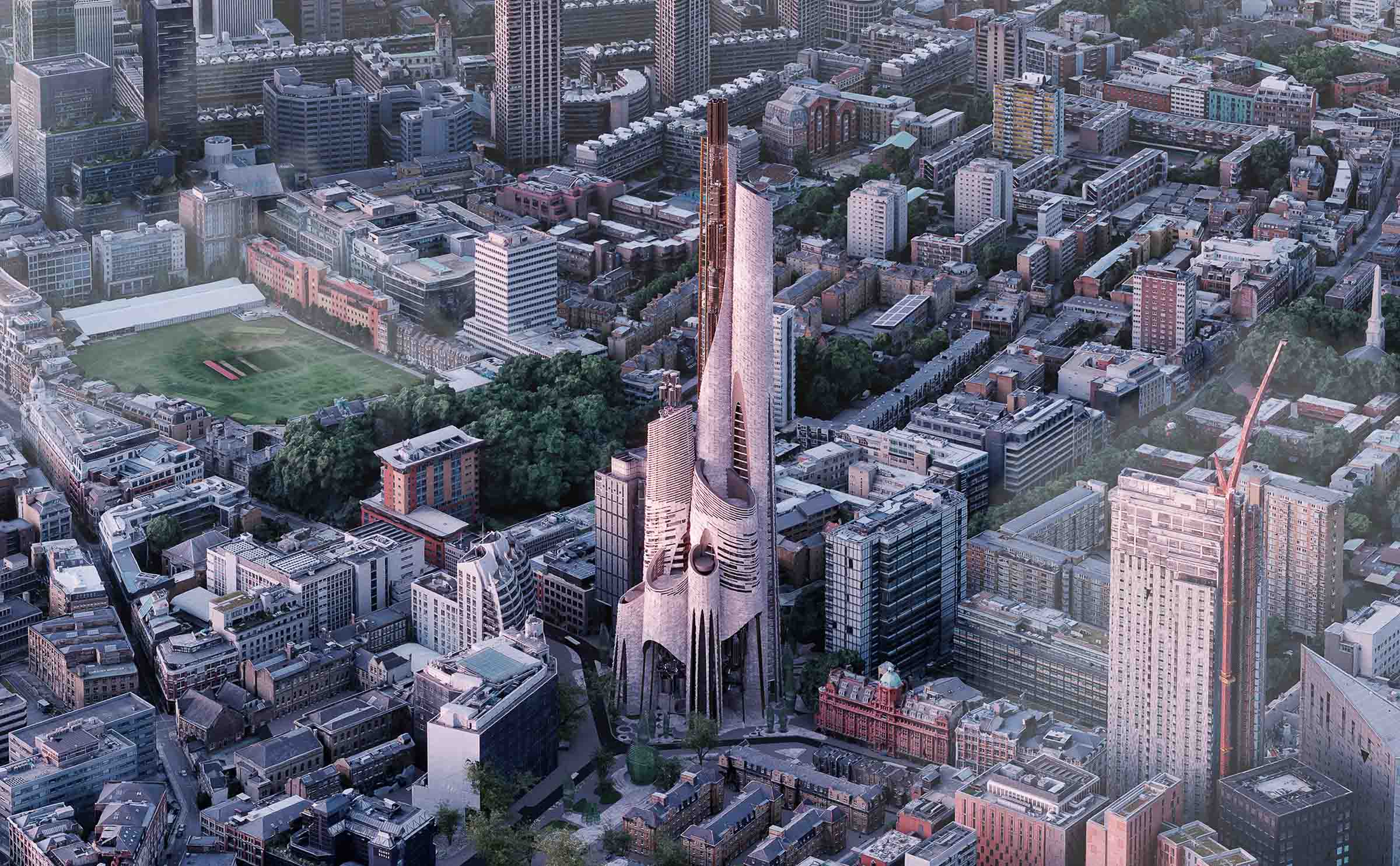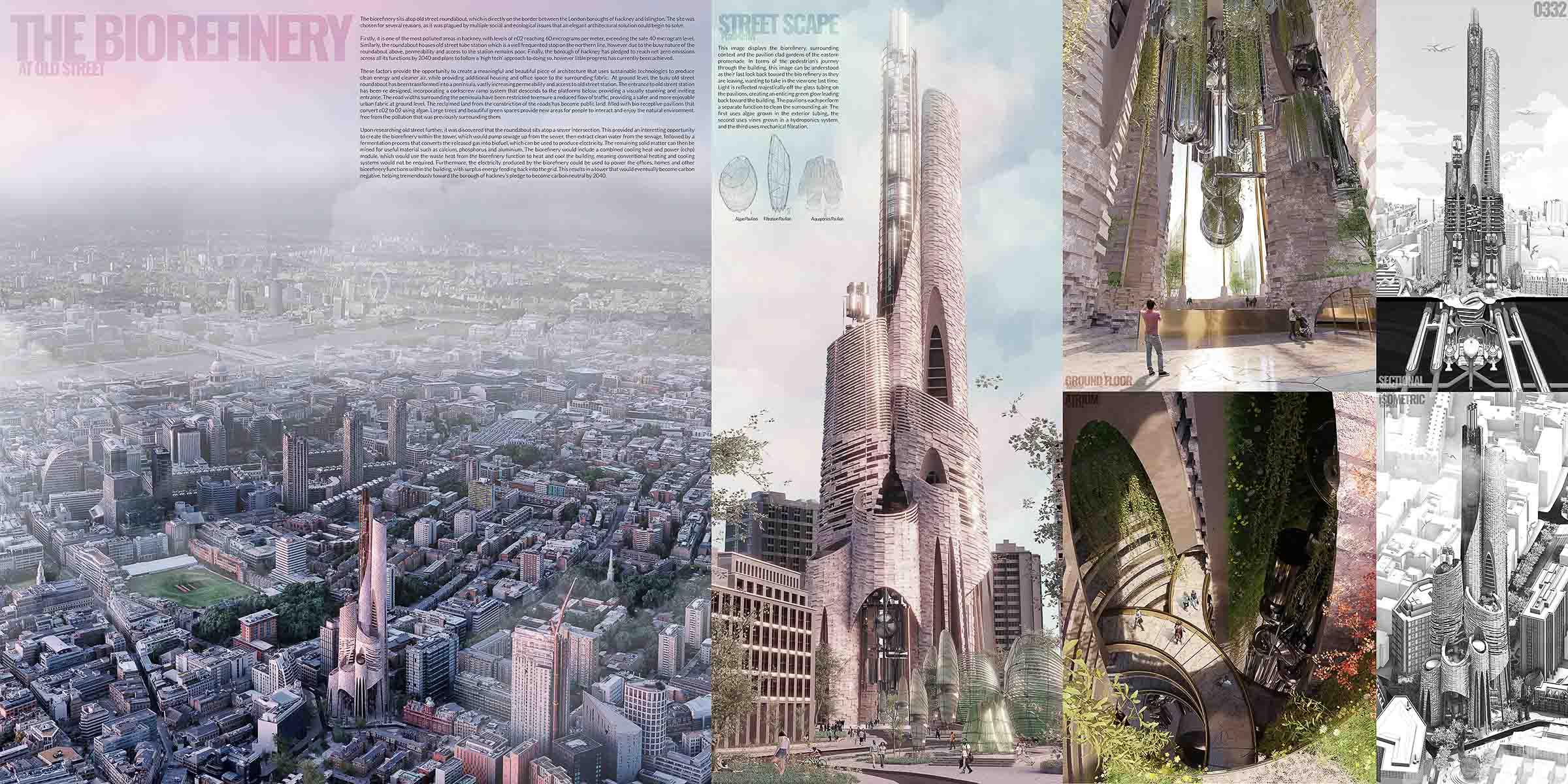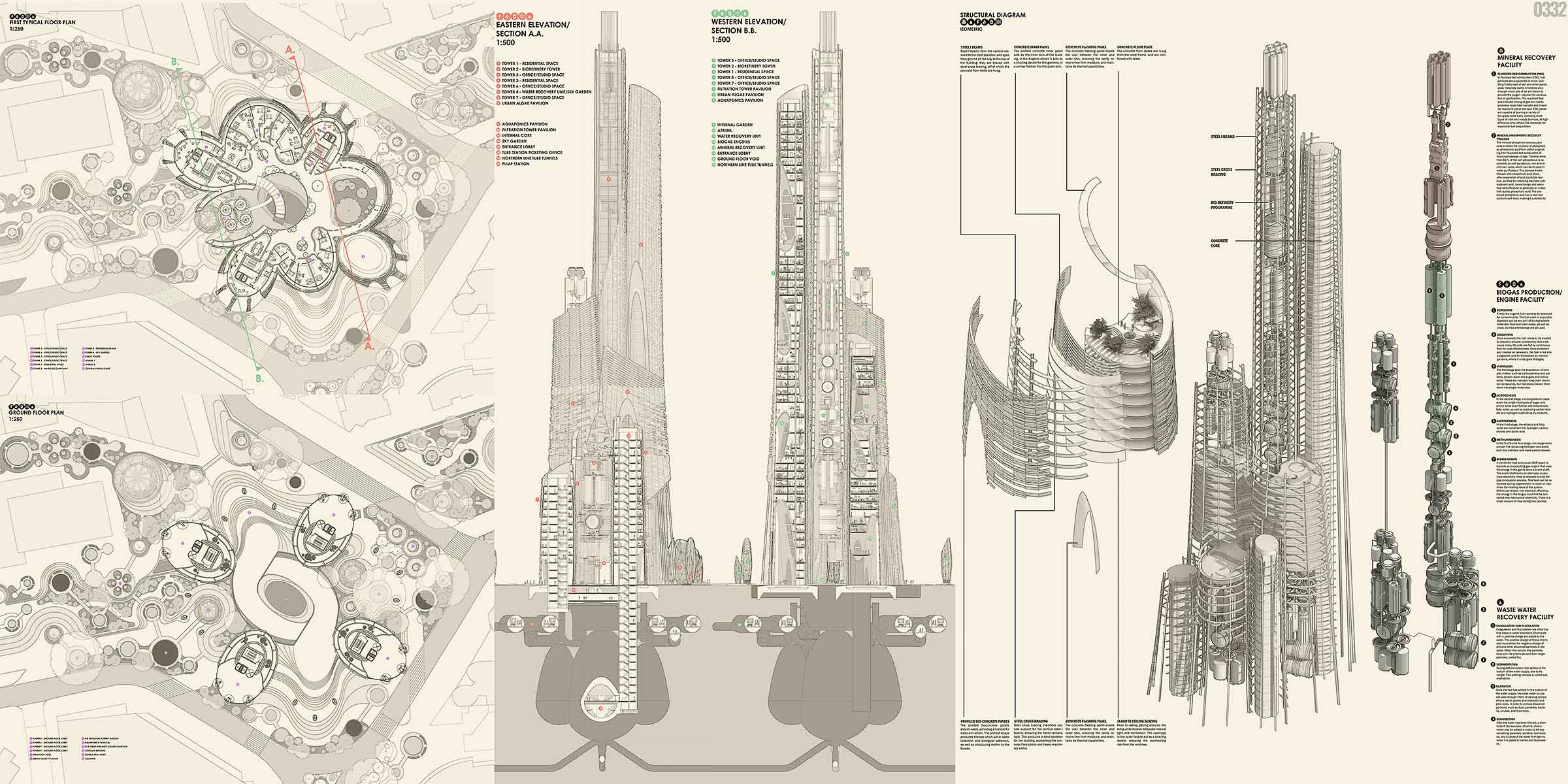
Honorable Mention
2021 Skyscraper Competition
Daniel Hambly
United Kingdom
The biorefinery sits atop an old street roundabout, which is directly on the border between the London boroughs of Hackney and Islington. The site was chosen as it was plagued by multiple social and ecological issues that an elegant architectural solution could begin to solve.
Firstly, it is one of the most polluted areas in Hackney, with levels of n02 reaching 60 micrograms per cubic meter, exceeding the safe 40 microgram level. Similarly, the roundabout houses an old street tube station which is a well-frequented stop on the northern line, however, due to the busy nature of the roundabout above, permeability and access to the station remain poor. Finally, the borough of Hackney has pledged to reach net-zero emissions across all its functions by 2040 and plans to follow a ‘high tech’ approach to doing so, however little progress has currently been achieved.
These factors provide the opportunity to create a meaningful and beautiful piece of architecture that uses sustainable technologies to produce clean energy and cleaner air while providing additional housing and office space to the surrounding fabric.
At ground level, the busy Old Street Roundabout has been transformed into a peninsula, vastly increasing permeability and access to Old street station. The entrance to Old Street Station has been re-designed, incorporating a corkscrew ramp system that descends to the platforms below, providing a visually stunning and inviting entrance. The road widths surrounding the peninsula have been restricted to ensure a reduced flow of traffic, providing a safer and more enjoyable urban fabric at ground level. The reclaimed land from the constriction of the roads has become public land, filled with bio receptive pavilions that convert c02 to 02 using algae. large trees and beautiful green spaces provide new areas for people to interact and enjoy the natural environment, free from the pollution that was previously surrounding them.
Upon researching the old street further, it was discovered that the roundabout sits atop a sewer intersection. This provided an interesting opportunity to create the biorefinery within the tower, which would pump sewage up from the sewer, then extract clean water from the sewage, followed by a fermentation process that converts the released gas into biofuel, which can be used to produce electricity. The remaining solid matter can then be mined for useful materials such as calcium, phosphorus, and aluminum. The biorefinery would include a combined cooling heat and power (CCHP) module, which would use the waste heat from the biorefinery function to heat and cool the building, meaning conventional heating and cooling systems would not be required. Furthermore, the electricity produced by the biorefinery could be used to power the offices, homes, and other biorefinery functions within the building, with surplus energy feeding back into the grid. This results in a tower that would eventually become carbon negative, helping tremendously toward the borough of hackney’s pledge to become carbon neutral by 2040.





